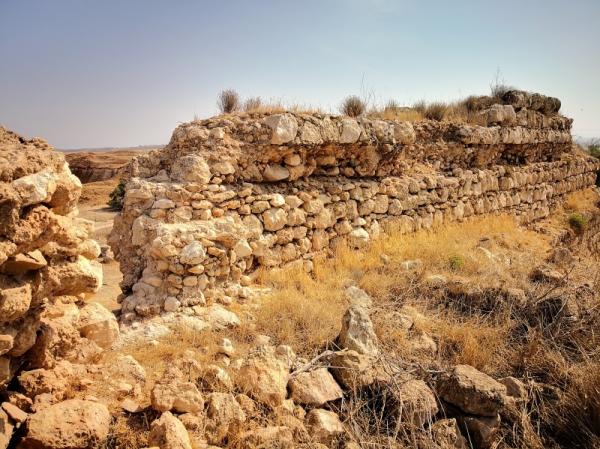Summil (Gaza)
The village was inhabited by Palestinian Muslims, in which they had at least one mosque that was built over the ruins of a Crusader church. The houses of the village were bricked. Its houses were built from adobe bricks, which are made of mud mixed and divided in molds. After drying, they are used for building. A school for boys was established in 1936, in which 88 students enrolled in 1945. The villagers obtained water for domestic use from a 48-meter-deep well, which they called “The well of al-Khaleel (Hebron).” The village paid taxes levied on the yield of wheat, barley, fruit, and other products, such as goats and beehives, as well as grain, grapes, and figs, which were staple crops. The money in the village was scarce, and livelihood was modest, as a piece of cloth was valued at one piaster, a chicken at three, a kilogram of meat at six, a calf at four pounds, a camel at five and a half pounds, and one piaster could buy a dozen eggs.
The first Mukhtar (village chief) was Hajj Ahmad Muhammad Salmi, and the second was Yusef Ahmad Hassan Awad. The first Mukhtar owned 1,400 dunums of land, most of which were country hubs, i.e. distant fertile lands, which he exchanged with the Jews for lands close to the Mukhtar’s land. The filthy rich Mukhtar was known for his wealth throughout the whole region. He owned sheep that were cared for by a special shepherd, with which he honored his guests. The second Mukhtar, however, was poor, as he only owned one structure, which he obtained on the eve of the occupation, and the house cost him a lot. After leaving the village, the second Mukhtar remarried and worked with the Formel agency in the Fawwar camp and remained in that job until he retired and died in al-Fawwar, where he was buried.
Weddings in the village: Asking for the bride’s hand took place without the bride being present in front of the groom at all, and the cousin had the priority when it came to engagements, but the matter later changed, as the cousin's engagement to his cousin became dependent on the approval of both parties. The people celebrated the wedding of the bride and groom. The groom’s party included an entertainer and Dabkeh, and at the wedding animals were slaughtered and the feasts were spread to feed all those who attended. The attendees brought sugar and rice as a gift to the groom's family, and the situation was bad, so they brought the goods without bags. However, if sacrifice animals were available, they would offer the sacrifices as a gift, and sometimes they would race on horses as a ritual of the wedding.
Funerals in the village: The people of the village were used to the invitation of the family of deceased when one of them passed away. The mourning ceremony lasted more than three days, as male mourners attended from outside the country. If the deceased was known abroad and famous, the mourners provided sacrifice animals. The men lived to about 80 years old but the average life expectancy was at about 70 years old.
The cemetery: The cemetery was found in the north near an old cemetery, and the cemetery was located on communal land for all the people of the village, and families owned sections that weren’t officially identified. In general, the deceased were buried in old graves, but the village’s elders were buried in new graves, so that each one of them had a new grave made of stones from outside the country.
Quarters (Harat) were built for each family, which residents of the mountain called “the square” (al-Saha). Some villagers chose not to join their families’ quarters, so they built small private quarters with a small number of members. The construction of quarters was not available to all the people of the village, and those who did not have quarters would visit other quarters to spend the nights and drink coffee.
The village in Ramadan: The people of the village used to have the Iftar meal collectively in the square, as each person would bring whatever food was available to him and share it with everyone. When guests were welcomed in the village, all the people of the village would break their fast with the host, and some would share their hospitality and assistance for the guest.
Israeli forces of the Givati Brigade occupied the village in one of its attacks launched in the south, during the period known as the “ten days” or the period between the two armistices (between July 8 and 18, 1948). The Zionists entered Summil on July 9, 1948 and burned the village. Some of them returned as infiltrators. Its residents were expelled towards the Hebron area. A number of the villagers moved to Idna and from there to Nabi Salih, then to the caves in Taffuh, and from there to al-Fawwar camp.
The village today
The remains of the village's houses still exist, as well as the remains of a wall that was likely built at an earlier time to surround the village. In terms of vegetation, mallow plants cover the site, in addition to wild grasses, shrubs of Christ’s thorn, and thick hedges of cacti. One can also see an old village road aligned with a row of cacti. A hut was built on the village’s land to house an Arab family (whose members likely work in an Israeli settlement). The rest of the surrounding lands are used by Israeli farmers.
